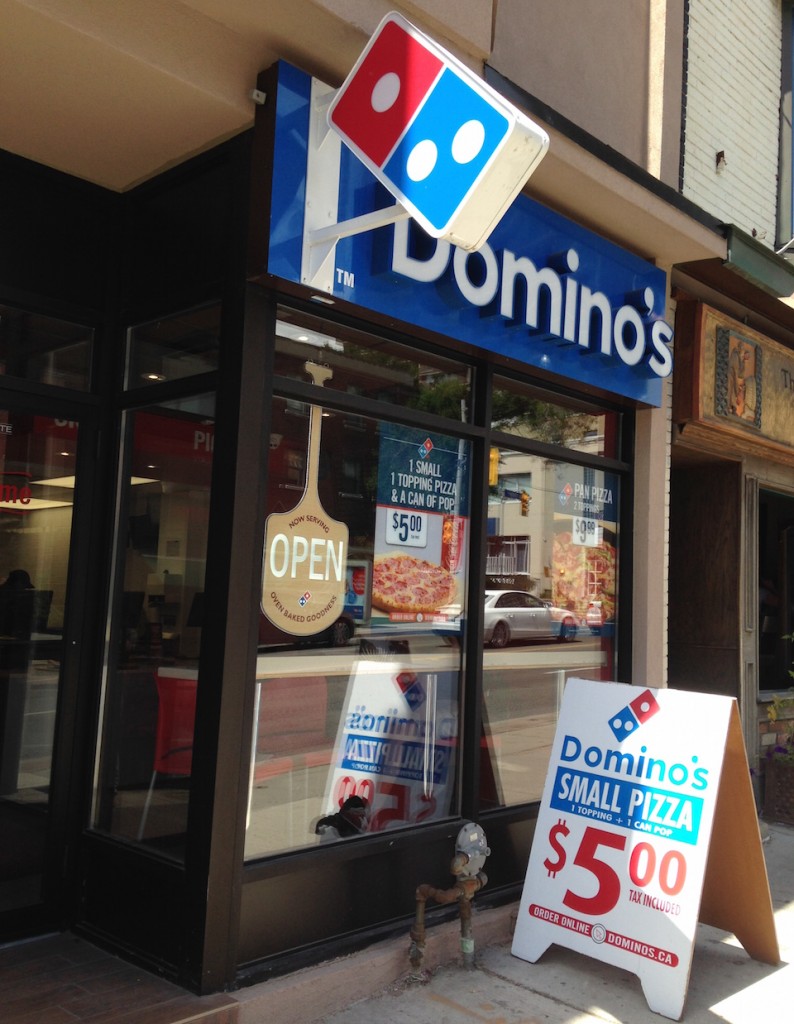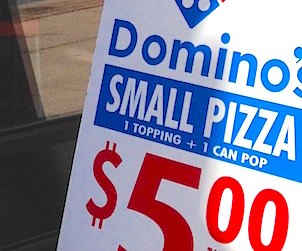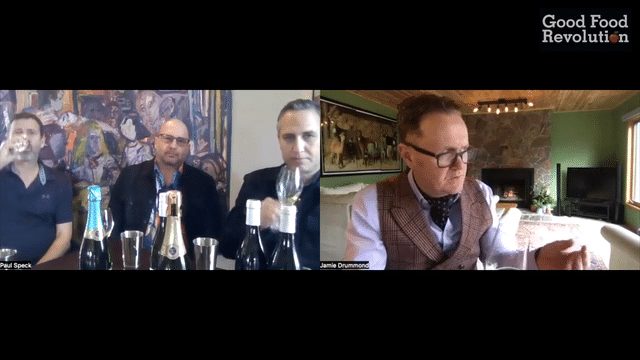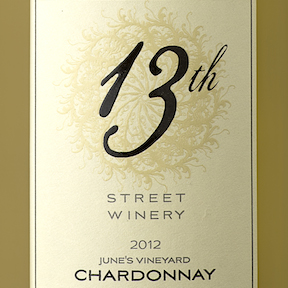
I caught the last few minutes of good food activist, author and New York Times columist Mark Bittman’s recent CBC Radio interview with Shad. He reminded me and the audience that this phase of the good food revolution isn’t even 20 years old. He cited dates of publication of Eric Schlosser’s Fast Food Nation (1999) and Michael Pollan’s Ominvore’s Dilemma (2006) as the modern movement’s two watershed moments. I was glad for the reminder. I read both books voraciously when they were published and they continue to shape my life and, of course, my vocation. I had forgotten just how new their respective critiques and analysis of the fast food industry and the industrial food system that supports it seemed at the time. It also reminded me that I live in a Good Food Revolution bubble of delicious, wholesome and responsibly produced food, but the most of my fellow citizens don’t, can’t or won’t. Still, the point really didn’t come home until I saw the sign above, two and a half blocks away from home.
Forbes magazine ranks Domino’s Pizza as the seventh largest global fast food chain. It has thousands of outlets across the world, and its Canadian website claims their hospitality is extended across the Dominion with the headline “Over 390 Locations Coast to Coast” . One of their newest locations opened up a few weeks ago in my Toronto neighbourhood, Summerhill. Weeks ago, when I saw the branding that indicated the storefront between Walker and Woodlawn on the east side of Yonge was going to be a Domino’s, I was puzzled. Most of the retail on the Summerhill strip is pretty high-end, and reflects what one would imagine to be the tony tastes of the owners of expensive homes in Summerhill or neighbouring Rosedale – well, anywhere in the downtown core of Toronto, really. But of course that was myopic and self-involved. Sinc eit opened there are lots of Domino’s customers coming in and out of that new location. Some are students from the nearby schools (or were before the break). Some are construction, office, domestic or service workers on lunch break. They are not the same people that frequent the fancy antique and interior design shops next door, but they are there, as the MBA’s at Domino’s must have known.
All of this would be fair enough; it’s a free country. But the sandwich sign I saw outside of “my” Domino’s this afternoon stopped me dead in my tracks in a Eureka flash of comprehension and discouragement. I took the picture above and began to think about what I would write about it at GFR, once its meaning and significance clicked in my bourgeois brain.
The sign advertizes a small pizza, with one topping (a picture on another sign shows pepperoni, likely the most popular) and a can of pop (the picture shows Coke) for $5.00 including tax. On strict calculation of calories for money, I don’t think you could beat this deal. I realized right away that if I was my 12 year old son with, say $20 in pocket money given by a grandparent, this would be an amazing value. I’d get a whole small pizza (the size of which, at ten inches, you’d (rightly) pay about $15 for down Yonge Street at Terroni) and a can of pop and still have $15 left over for candy, comics, iTunes or dollar store purchases. Then, I thought, if I were our nanny and were passing by with all of my three kids, I could feed them them all for under $20 – maybe even substitute the the can of Coke for a Five Alive, or another sugary juice-like drink to affect a nearer simulation of a wholesome meal. And I’d have $5 left to buy treats for dessert. It was pretty clear to me, and is still, that my kids were going to be eating a Domino’s small pizza, washed down with a Coke sooner or later.
Fine. They eat lots of good, whole foods at home, as they do when my wife and I take them out to places like Terroni. I don’t mind if they have a super-processed-junky treat once and a while. It’s ok because they are privileged and they and their parents have options, educations and financial resources to make sure the bulk of their diet isn’t made up of the primary causes of industrial society diseases. But what if we didn’t? What if I drove a taxi to support a newly immigrated family at one of the 70’s era rental apartment buildings a block away? Or my wife worked at one of the big houses on Woodlawn Avenue and saw the sign on her way to the subway ride home? It seems to me that no amount of Jamie Oliver YouTube videos, or CBC Radio interviews, can really argue with $5 for a square meal in downtown Toronto. It’s too good a deal. Worse, it’s too good a deal to be a treat.
After my little epiphany came another: how or why is Domino’s selling a pizza and a can of Coke for $5? There seems to me to be only two possibilities, each equally grim and discouraging:
- They can’t, and this is only a temporary loss leader promotion designed to attract the people in the neighbourhood already addicted to this kind of food (cf. Mark Schatzker); or
- They can, and they are able turn a profit on this offering by exerting their purchasing power on the Coca-Cola company for cheap pop and through some frightening alchemy make 10″ a pizza with tomato sauce, cheese and pepperoni for a few dollars apiece and sell enough of them to make a lot of (figurative) dough.
I honestly don’t now which scenario is more troubling. Each one seems to suggest that the Domino’s around the corner is going to be there for awhile and Mark Bittman’s right: it’s early days yet.
 Malcolm Jolley is a founding editor of Good Food Revolution and Executive Director of Good Food Media, the company that publishes it. Follow him on Twitter or Facebook.
Malcolm Jolley is a founding editor of Good Food Revolution and Executive Director of Good Food Media, the company that publishes it. Follow him on Twitter or Facebook.






